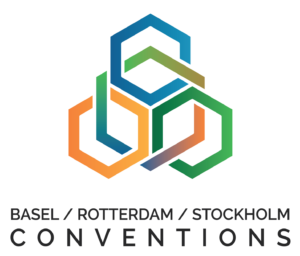Geneva Health Forum 2022 | Virtual Stand
Welcome to the virtual stand hosted by the Basel, Rotterdam and Stockholm Conventions, the Minamata Convention on Mercury, the Strategic Approach to International Chemicals Management (SAICM), and the Geneva Environment Network at the Geneva Health Forum 2022. These organizations are hosted by the UN Environment Programme and based in Geneva. Here you will find resources to better understand the linkages between human health and the environment, and the international cooperation on issues at this nexus.
About Health and the Environment
Healthy ecosystems are at the foundation of human health. Our health depends upon ecosystem products and services, including the air we breathe, the water we drink and the food we eat. Well-functioning ecosystems are essential to limit diseases and stabilize the climate. Moreover, biodiversity underpins many significant medical and pharmacological discoveries. However, humanity’s destruction of nature is driving up risks to our well-being and health. Human-driven climate change, biodiversity loss and pollution threaten health on a global scale.
The recent pandemic has reminded us of the deep connections between health and the environment. In this context, the One Health approach, which recognizes the interconnections between human, animal and planetary health, provides important insights into how to foster better health outcomes. Learn more about some key issues at the health and environment nexus through the resources below.
Basel, Rotterdam and Stockholm Conventions

The Basel Convention on the Control of Transboundary Movements of Hazardous Wastes and their Disposal is a multilateral environmental agreement which aim is to protect human health and the environment against the adverse effects of hazardous waste. It was adopted on 22 March 1989, in response to a public outcry following the discovery, in the 1980s, in Africa and other parts of the developing world of deposits of toxic wastes imported from abroad.
The Rotterdam Convention is a multilateral environmental agreement. It promotes shared responsibility and open exchange of information based on a prior informed consent procedure in the international trade of hazardous chemicals. Since its adoption in in 1998, its aim is to protect human health and the environment from potential harm.
The Stockholm Convention on Persistent Organic Pollutants is a global treaty to protect human health and the environment from persistent organic pollutants (POPs). POPs are chemicals that remain intact in the environment for long periods, become widely distributed geographically, accumulate in the fatty tissue of humans and wildlife, and have harmful impacts on human health or on the environment. The agreement was adopted in 2001.
Since 2012, the Secretariats of the Basel and Stockholm conventions, as well as the UNEP-part of the Rotterdam Convention Secretariat, are integrated in a single Secretariat with a matrix structure serving the three conventions.
Minamata Convention on Mercury

The Minamata Convention on Mercury is a global treaty to protect human health and the environment from the adverse effects of mercury. Adopted on 10 October 2013 at a Diplomatic Conference held in Kumamoto, Japan, the agreement entered into force in 2017. The Convention draws attention to a global and ubiquitous metal that, while naturally occurring, has broad uses in everyday objects and is released to the atmosphere, soil and water from a variety of sources. Controlling the anthropogenic releases of mercury throughout its lifecycle has been a key factor in shaping the obligations under the Convention.
Strategic Approach to International Chemicals Management (SAICM)

Adopted by the First International Conference on Chemicals Management (ICCM1) on 6 February 2006 in Dubai, the Strategic Approach to International Chemicals Management (SAICM) is a policy framework to promote chemical safety around the world. SAICM’s overall objective is the achievement of the sound management of chemicals throughout their life cycle so that by the year 2020, chemicals are produced and used in ways that minimize significant adverse impacts on the environment and human health.
Geneva Environment Network

The Geneva Environment Network (GEN) is a cooperative partnership of more than 100 environmental and sustainable development organizations based at the International Environment House in Geneva and at other locations in the surrounding region. They include United Nations offices and programmes, intergovernmental organizations, NGOs, local governmental authorities and academic institutions.
Established in 1999, GEN organizes and hosts meetings, roundtables, briefings and workshops promoting the dissemination of information and public awareness of environmental issues. In addition, GEN actively promotes increased cooperation and networking among its partners and develops a weekly newsletter highlighting the latest news, resources, events and job opportunities in the region. GEN provides a number of resources for both experts and the wider public on key thematic issues, including on health and the environment.
Other Organizations in Geneva
Besides those who participated in our virtual and physical stand at the Geneva Health Forum, many other organizations in Geneva are working at the nexus of health and the environment.
By alphabetical order
Global Alliance on Health and Pollution (GAHP)
The GAHP is a collaborative body made up of more than 60 members and dozens of observers that advocates for resources and solutions to pollution problems. GAHP was formed because international and national level actors/ agencies recognize that a collaborative, multi-stakeholder, multi-sectoral approach is necessary and critical to deal with the global pollution crisis and resulting health and economic impacts.
Health, Environment and Climate Change Coalition (HECCC)
In 2018, the heads of the World Health Organization (WHO), UN Environment and World Meteorological Organization (WMO) launched a new global coalition on health, environment and climate change (HECCC). One of its overall goals is to reduce the annual 12.6 million deaths caused by environmental risks, with a special focus on air pollution.
United Nations Special Rapporteur on the Right to Health
The Special Rapporteur on Human Rights and the Environment is mandated to continue to study the human rights obligation towards the full realization of the right of all to the enjoyment of the highest attainable standard of physical and mental health. The current Special Rapporteur is Tlaleng Mofokeng.
United Nations Special Rapporteur on Human Rights and the Environment
The Special Rapporteur on Human Rights and the Environment is mandated to continue to study the human rights obligations relating to the enjoyment of a safe, clean, healthy and sustainable environment. The current Special Rapporteur, David R. Boyd, has developed various reports, such as “The Right to Breathe Clean Air” and “The right to a clean, healthy and sustainable environment: non-toxic environment“, that highlight the interlinkages between a healthy environment and well-being.
World Health Organization (WHO)
The WHO indicates that the world population is encountering unfamiliar human-induced changes in the lower and middle atmospheres and world-wide depletion of various other natural systems. Beyond the early recognition that such changes would affect economic activities, infrastructure and managed ecosystems, there is now recognition that global climate change poses risks to human population health. Climate change is emerging as a major theme in population health research, social policy development, and advocacy. Consideration of global climatic-environmental hazards to human health will become a central role in the sustainability transition debate.
In terms of air pollution, the First WHO Global Conference on Air Pollution and Health took place in Geneva in from 30 October to 1 November 2018. The WHO also developed the guideline “Health and the Environment: Addressing the Health Impact of Air Pollution“.
World Meteorological Organization (WMO)
WMO advances integrated sciences and services to better manage risks to human health related to climate change, extreme weather and climate, water, air quality and solar radiation. Through the WHO/WMO Joint Office for Climate and Health, they are establishing an online Health and Climate Science Portal, which promotes actionable science for the management of environmental risks to health.
